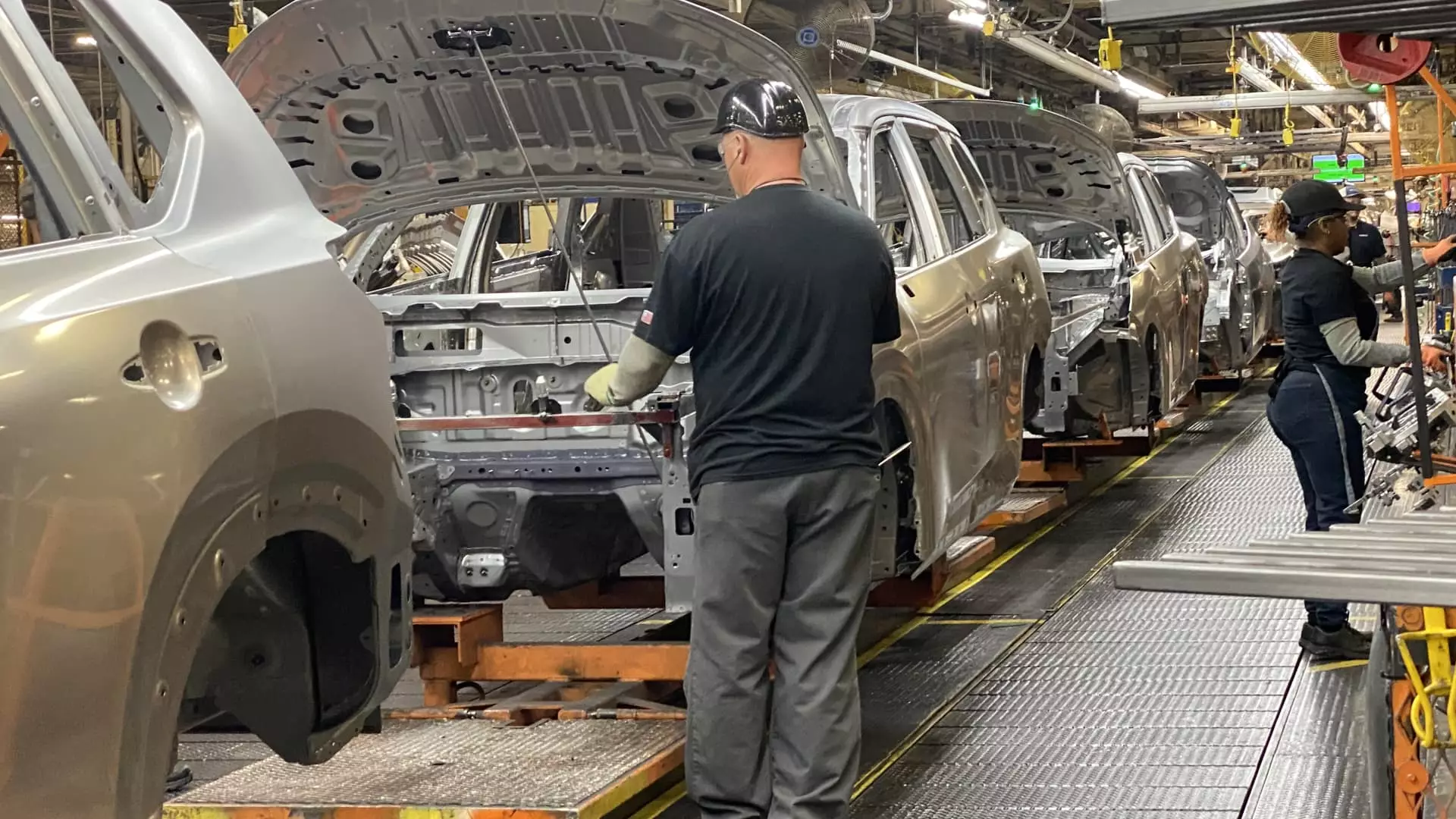The automotive industry’s landscape is shifting alarmingly due to the continued enforcement of President Donald Trump’s 25% tariffs on imported vehicles. This policy is not merely a temporary inconvenience; it signals a crisis of unprecedented proportions. Analysts forecast that these tariffs could lead to a staggering decline in vehicle sales by millions annually, with dire downstream effects rippling through the economy. We are on the brink of witnessing not just price hikes but a fundamental restructuring of how cars are manufactured and marketed in the United States.
Felix Stellmaszek from the Boston Consulting Group encapsulates the situation succinctly: the ongoing tariff regime may herald the most consequential year in automotive history. Unlike prior challenges, this one is driven explicitly by policy. As costs escalate and consumer demand softens, the auto industry’s financial viability hangs in the balance. The last thing we want is for consumers to sustainably detach from the automotive market due to unwillingness or inability to pay inflated prices, but the facts indicate we are hurtling towards this eventuality at breakneck speed.
The Hard Numbers: An Economic Wake-Up Call
Assessing the financial implications of these tariffs highlights just how substantial the threat is to America’s automotive landscape. Reports project that industries could face increased costs ranging from $110 billion to $160 billion annually due to the tariffs. This is not just a blip—instead, it signifies more than 20% of U.S. new-vehicle market revenues being jeopardized. For automakers like Ford, General Motors, and Stellantis, the impending financial strain translates into a staggering burden of around $41.9 billion in additional costs.
The financial damage is compounded when factoring in rising global inflation, crippling consumer purchasing power, and prolonged uncertainty. Goldman’s analysis predicts that vehicle prices could increase by $2,000 to $4,000 within the year. This price escalation is hard to absorb in an environment where affordability has already become an endemic problem—new car prices average nearly $50,000, compounding financing rates that remain historically high. Coupled with rising loan costs nearing 9.64% for new vehicles, the situation is precarious.
A Dismal Outlook for Automakers and Consumers
These tariffs activate a heartbreaking paradox in the market: the very consumers who are meant to benefit from domestic manufacturing could end up shouldering the brunt of the burden. Automakers are faced with few viable options other than to pass down cost increases to consumers, which we can already see reflecting in consumer sentiment. This cycle has the potential to crush sales figures to the extent of a two million unit decrease annually for both the U.S. and Canadian markets.
Sam Abuelsamid, a telemetric vice president, describes this impending contraction as resembling a treadmill—higher prices have the cascading effect of diminishing purchasing power across the economy. Consumers faced with inflated vehicle costs may restrict spending elsewhere, resulting in a broader economic slowdown. It’s more than an auto industry crisis; it’s a ticking time bomb for financial stability across sectors fueled by consumer spending.
Manufacturer Adaptations: A Desperate Response
In response to these unsustainable pressures, different automakers are executing varying strategies. Some, like Ford and Stellantis, have launched employee pricing incentives as a bid to keep their consumer base intact, while others, such as Jaguar Land Rover, have opted to halt shipments to the U.S. altogether. Some companies, like Hyundai, are trying to provide temporary relief by delaying price hikes. These decisions can be likened to band-aiding the larger hemorrhaging wound of industry instability, but we need a more robust, long-term strategy to contend with these tariff-induced issues.
The looming increase in prices and reduced availability could deter consumers from purchasing new or even used cars, with some models facing elimination due to untenable production costs. While some brands may try to maintain a “discount” for as long as possible, the inevitable rise in pricing due to both imposed tariffs and existing inflationary pressures is an insurmountable wall that no marketing campaign can shatter.
Looking Beyond Tariffs: A Call for Strategic Reform
In light of these developments, it’s essential to look beyond tariffs and reconsider their broader implications for the automotive industry. The upheaval these policies create should serve as a wake-up call. Instead of merely debating tariffs, we need proactive measures that encourage sustainable practices while bolstering economic stability. Policy reform must facilitate a healthier ecosystem for manufacturers and consumers alike, enabling innovation, affordability, and accessibility.
The automotive industry is at a crossroads; the choices made today could mark a turning point toward either recovery or decline. The ongoing tariff saga is not merely an economic footnote—it is a pivot upon which the future of American automotive manufacturing hangs. The stakes are high, and the consequences loom larger than life for both the industry and the economy as a whole.

